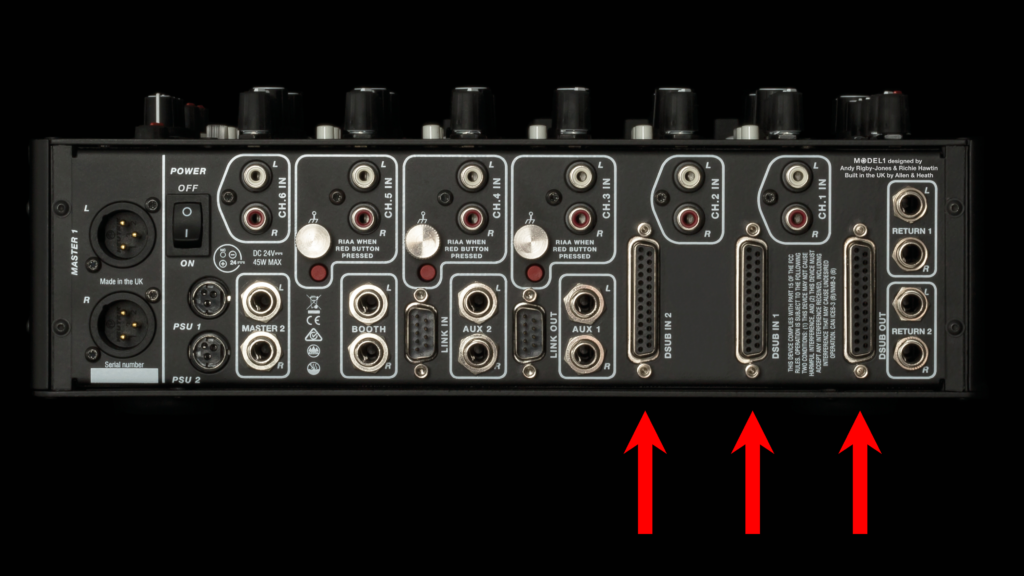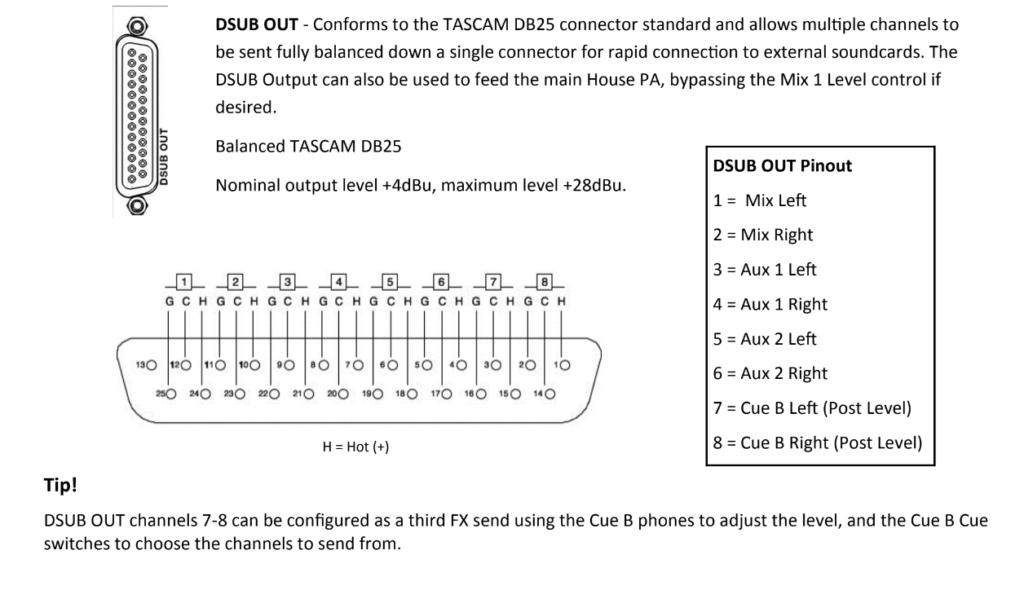
Written by: Alex Zinn – PLAYdifferently brand manager
In this article we are going to learn about the giant DSUB25 connectors that can be found on MODEL 1. If you’re like me, then the first thing that comes to mind when you see these is, “Why does MODEL 1 have printer connectors on it?” In actuality, DSUB25 connectors are quite common in the professional audio industry. They can be found on professional audio interfaces, mixing consoles, patch bays… Basically in any situation where a high channel count of balanced audio needs to be connected.
The DSUB, also known as “D-subminiature”, is an electrical connector that gets its name from the characteristic D-shaped metal shield. MODEL 1 incorporates three DSUB25 connectors, which implement the TASCAM Analog pinout, allowing users to take full advantage of the mixer’s fully balanced circuitry.

Each DSUB25 connector allows for up to 8 mono signals of balanced audio to be sent down a single multi-core cable. Think of it as a single connection replacing what would normally require 8 XLR jacks. In fact, you can purchase cables known as DSUB breakout cables, that have 8 XLR or 8 TRS connectors. These can be used to connect audio interfaces which have balanced connectivity but no DSUB, such as the Motu Ultralite Mk4, or Focusrite Scarlett 18i20.
You can find the TASCAM pinout diagram, taken from the MODEL 1 manual, below:

Some simple math will lead us to understand why three DSUB connectors are used. MODEL 1 has a total of eight analog inputs, made up of the six fully featured input channels, and two stereo returns. Eight stereo channels require sixteen mono signals (since each stereo input requires a LEFT and RIGHT signal). Each DSUB25 connector can handle eight mono or four stereo signals. This leads us to understand why MODEL 1 features DSUB In 1 and DSUB In 2.
We are left with one DSUB connector unaccounted for, labelled DSUB OUT. This DSUB connector is used to take signals, such as the Aux sends, out from the mixer. There are again four stereo signals present: Master L-R for recording, Aux 1&2 for FX sends, and a copy of CUE B. The inclusion of CUE B on the DSUB Out allows more advanced users to use CUE B as a third FX send.
There are many advantages to using DSUB connectors versus the phono connectors traditionally found on DJ mixers. First and foremost is the fact that the DSUB connector allows for the use of balanced connectivity, which leads to better sound quality when compared to an unbalanced phono lead.
The DSUB connection also makes complex set ups much faster and easier to connect. What would have been more than sixteen individual connections with a traditional mixer is now reduced to three, making setup and strike a breeze, even in the trenches of a bustling DJ booth.
Lastly, DSUB connections feature securing screws, which prevent the DSUB connector from accidentally being removed, whether by the pounding kick drums that can vibrate even the most secure of tables or by the previous performer removing cables.
